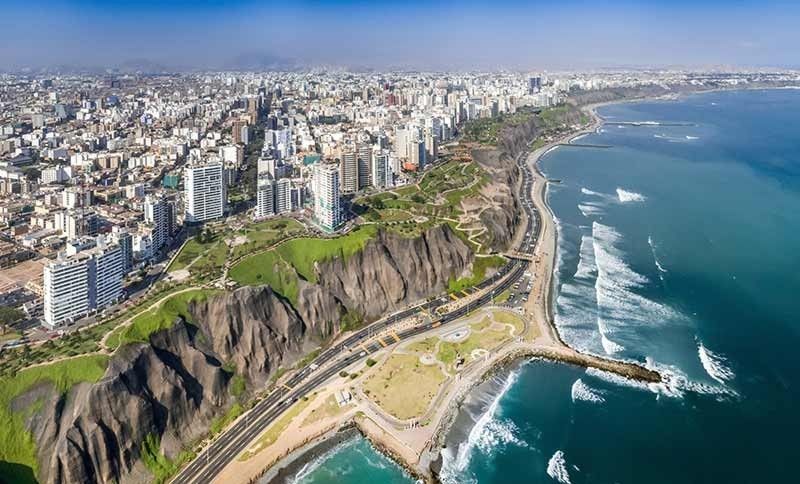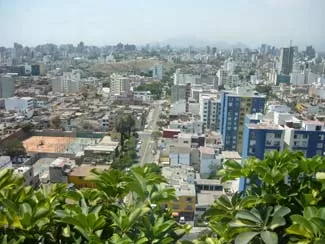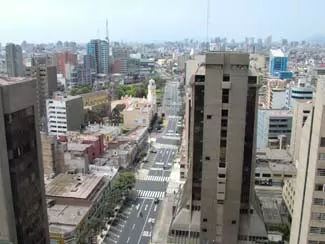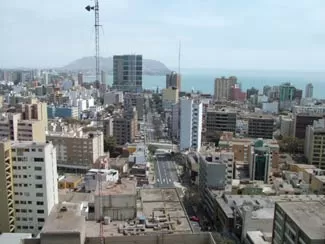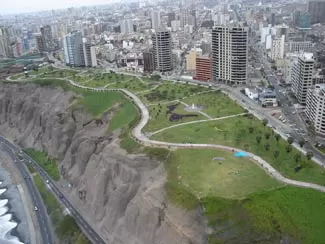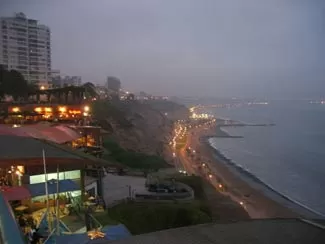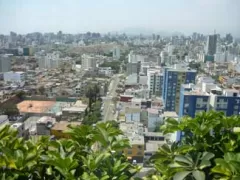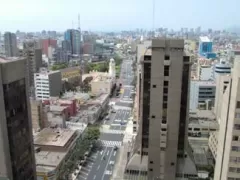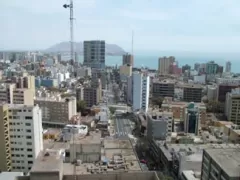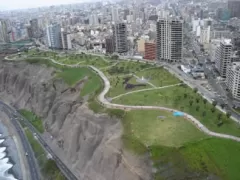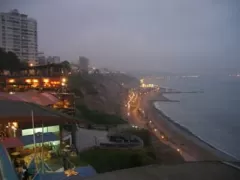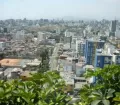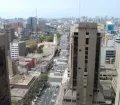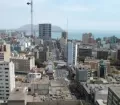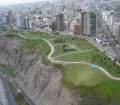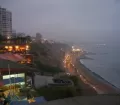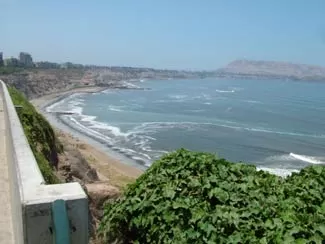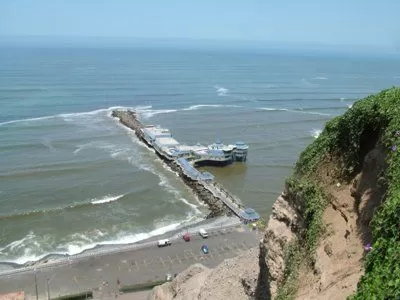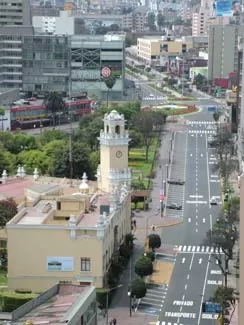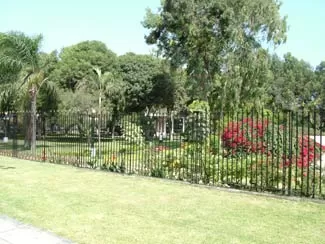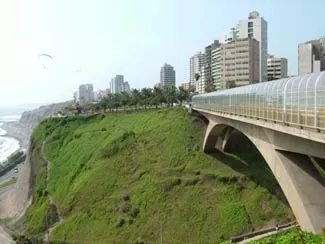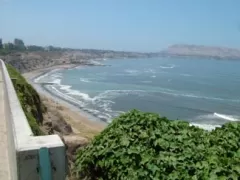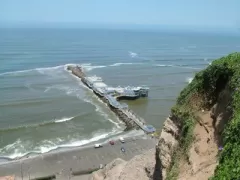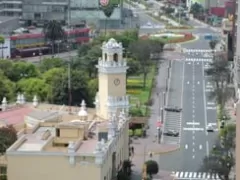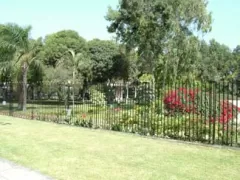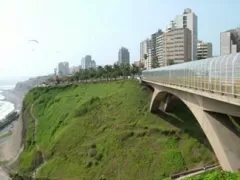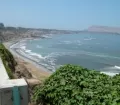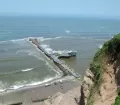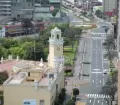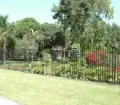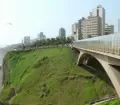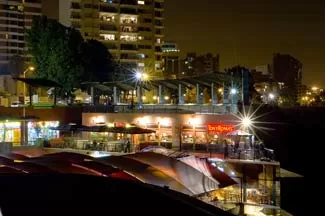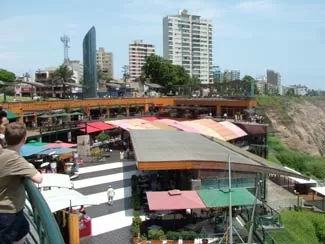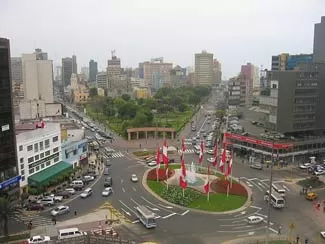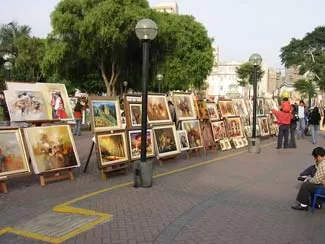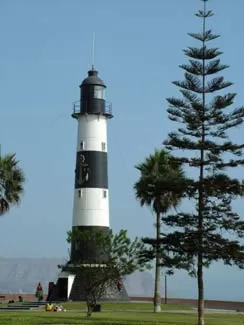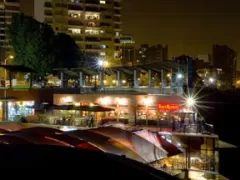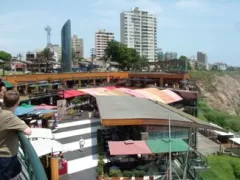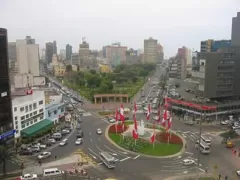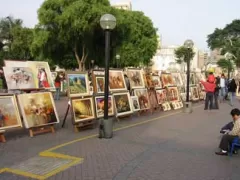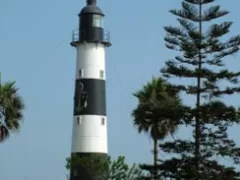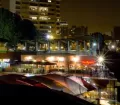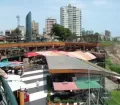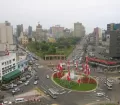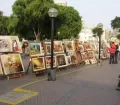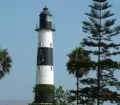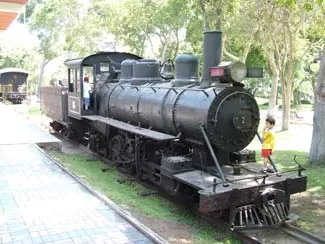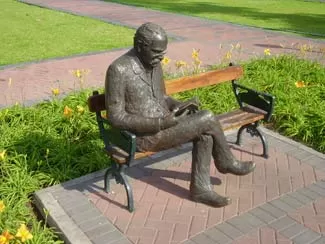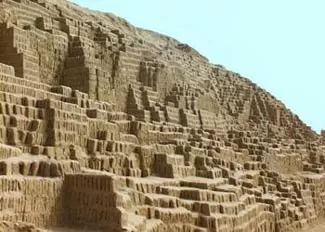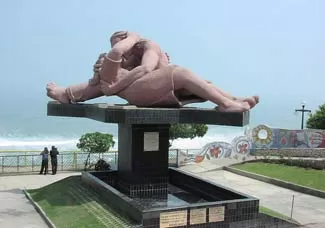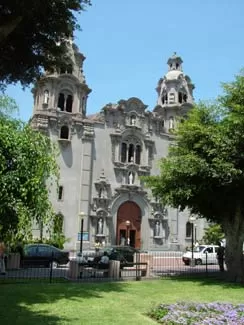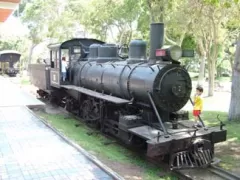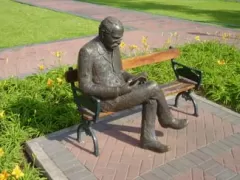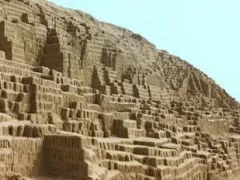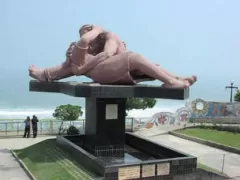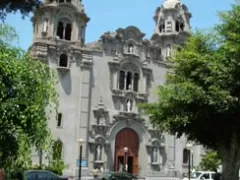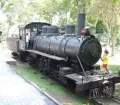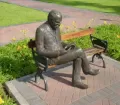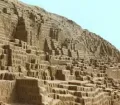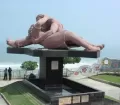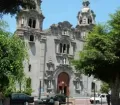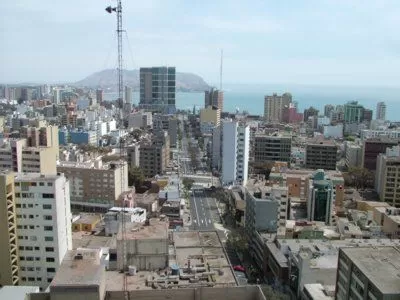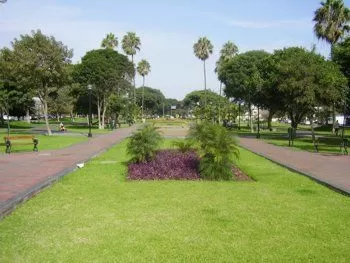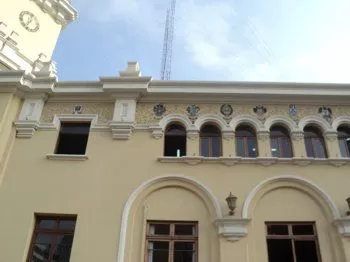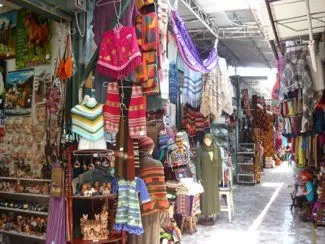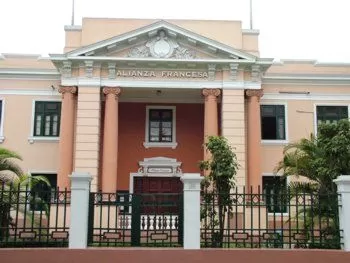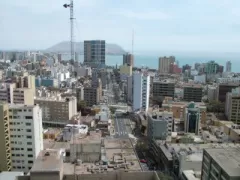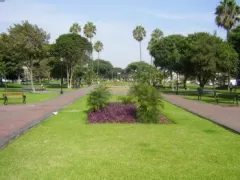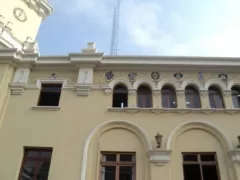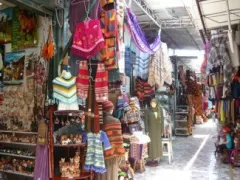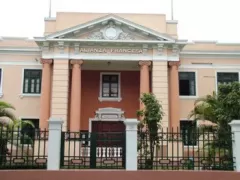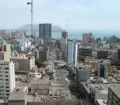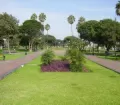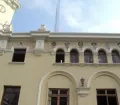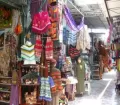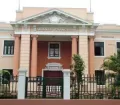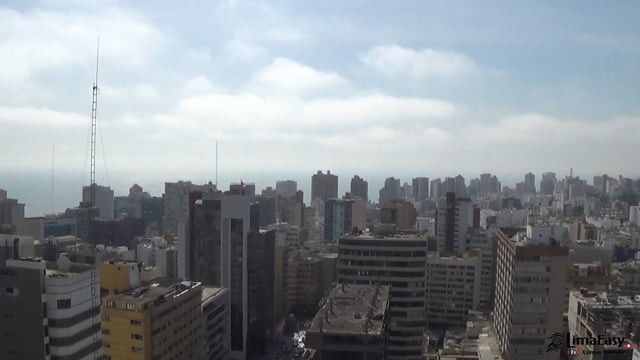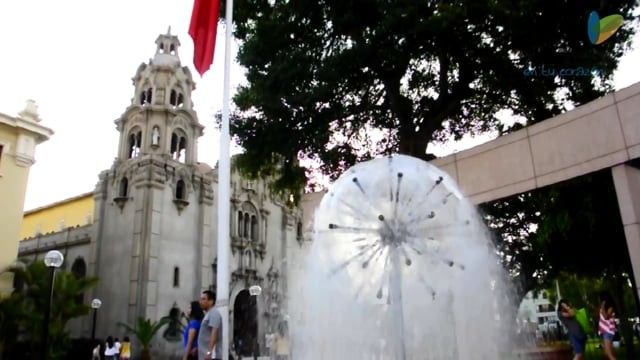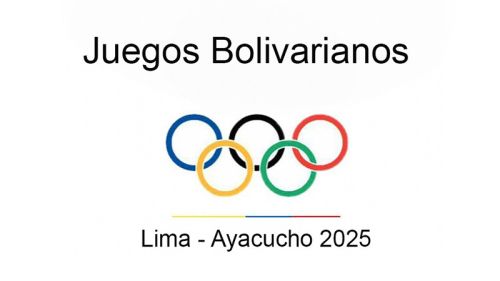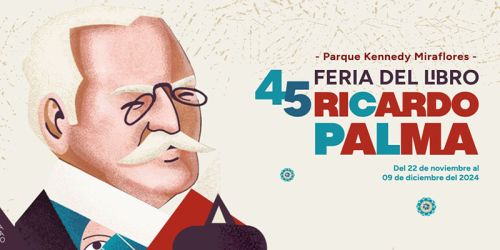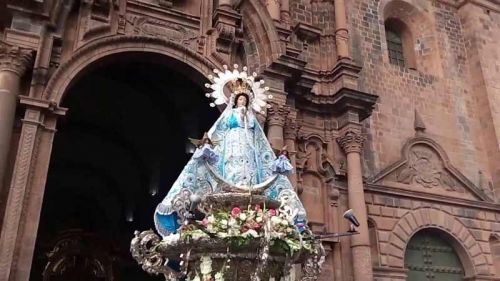Miraflores is without a doubt the most popular place for tourists, visitors, foreign expats and locals (who can afford it) to find accommodation, go shopping, have a good meal, relax in a nice café, party in one of the many bars, clubs and discotheques, savor the cultural life and enjoy your time.
The district has a lot to offer and therefore we can only highly recommend spending some time here and having fun in one of Lima's nicest "suburbs".
Street crime is closely controlled by police and the municipality on the streets, but still to some level present (as in any metropolitan in the world). They have opened a special police station only for tourists and visitors to provide a better service.
Miraflores combines traditional and trendy influences, one reason for Miraflores special charm and flair. Old houses coexist with modern multi-story buildings, hotels, casinos and banks. You find traditional cafes and restaurants next to modern European style establishments or fast-food chains, cultural institutions next to discos and bars.
Facts & Figures about Miraflores
The district of Miraflores was officially established on the 2nd of January 1857. It is located overlooking the Pacific Ocean. Miraflores has an area of 9.62 km². The district is connected to the city center of Lima by the Via Expresa (called as well Paseo de la República or Zanjón – the express highway) and the Avenida Arequipa. The Circuito de Playas de la Costa Verde (Beach Circuit of the Green Cost) links Miraflores to the northern and southern parts of town.
The district of Miraflores is limited by the district of San Isidro in the north, by the districts of Surquillo and Santiago de Surco in the east, by the district of Barranco in the south and by the Pacific Ocean in the west.
Brief History of Miraflores
Miraflores history is probably as old as the history of the occupation of the Peruvian coast. For thousands of years, people have lived in the beautiful area today known as Miraflores. The first settlers were fishermen, hunter and gatherers. Later, ancient cultures occupied the land overlooking the Pacific Ocean. A still visible reminder of these times is the Huaca Pucllana (Adobe Pyramid). Shortly after the foundation of Lima by Francisco Pizarro in 1535, the Spanish colonist populated the area today known as Miraflores. By the middle of the 18th century, we knew the area as San Miguel de Miraflores, with a parochial church in its center. Miraflores already had become a popular place for relaxation and recreation. The area soon gained popularity as a beach resort, and the elite of Lima built their summer residences at preferred locations of the tiny village.
With wealthy European immigrants settling in Miraflores in the middle of the 19th century, the rural community developed quickly to an upscale suburb of Lima. On the 2nd of January 1857, they officially established the district of Miraflores. During the War of the Pacific, Miraflores was one of the main defense lines against the invading Chilean troops. After the defeat of the Peruvian Army, Chileans badly looted Miraflores and set it on fire. Thanks to the brave men who tried to defend Lima during the War of the Pacific, Miraflores got the nickname "Cuidad Heroica" (Heroic City).
The recovery of Miraflores after the war only made slow progress. Step by step it developed into an exclusive residential area, where families brought up their children. At the beginning of the 20th century, Miraflores was still a quiet village with a population of only around 1200. But because of the construction of urbanizations, the opening of Av. Arequipa (first named Av. Leguía) that connects the city center with Miraflores, the motorization and industrialization Miraflores underwent a steady growth.
In the next 40 years, Miraflores developed into an important commercial and residential area. With the building of two for Miraflores highly important streets, the Via Expresa, also known as Paseo de la República or Zanjón (the express highway), and the Circuito de Playas de la Costa Verde (Beach Circuit of the Green Cost) in the 60s the rapid growth of Miraflores continued. Many beautiful old buildings were demolished and sky scrapers built instead (a development that unfortunately continues until today).
By the 90s this development had nearly destroyed the original charm of Miraflores. The municipality of Miraflores started an aggressive campaign to restore the beauty of the district, cleaned the streets, built green areas around town and made the city safer again. Today Miraflores is no longer the upper-class residential area, but an amazing suburb for Limeños and tourists with a special charisma surrounding it.
Places to visit & attractions in Miraflores
While in other districts you won't find a real city center, Miraflores has actually two. The first starts at the Ovalo Miraflores (Miraflores Roundabout) / Parque Central (Central Park) towards Av. Larco and Av. Diagonal (Oscar. R. Benavides) to the Pacific Ocean. Here you find many nice cafes, bars, shops, restaurants, hotels and hostels.
Unfortunately, only a few side streets are (semi) pedestrian zones like the famous Calle Pizza with its popular restaurants, bars and clubs, so traffic is as everywhere in Lima a proper topic. Be careful when crossing any street, as it doesn't matter if you are in the right or have green on the traffic lights – Here in Lima (Peru) it is unfortunately very simple: First cars than pedestrians!
Parques
Enjoy the major parks in the center, Parque Central and Parque Kennedy. These two parks unite to a big one in the heart of Miraflores with the building of the Municipality and the church of Virgen Milagrosa in the middle. This is really "the" place to experience the lifestyle of Miraflores.
The other part of the city center is at the seafront of Miraflores, running along the cliffs and overlooking the Pacific Ocean. Along Miraflores "Malecón" (coastal strip/street) you find a small oasis with many pleasant parks joining each other to a green stripe following the coastal line. The view over the Pacific Ocean is stunning. On clear days you can see from the whole bay from Chorrillos in the south right up to Callao in the north.
These are some parks: The Parque Salazar with the famous modern shopping and entertainment center "Larcomar", Parque del Amor (Park of Love), a beautiful park dedicated to all lovers, Parque El Faro with its lighthouse overlooking the Pacific Ocean and the best place to watch the famous paragliders of Miraflores, Parque Raimondi with its huge green areas inviting for a break and of course the Skate Park.
Other parks worth a visit are the Parque Reducto No. 2, established to pay homage to the heroes who tried to defend Lima from the invading Chilean troops during the War of the Pacific and the Parque de Tradiciones, dedicated to the great Peruvian writer Ricardo Palma.
Coast & Beaches
Miraflores is also well known by surfers for its beaches on the Costa Verde (green Coast). Here the ocean provides perfect winds and waves for this fantastic sport. The rocky beaches can get quite crowded in the summer month, even if swimmers prefer the sandy beaches in the south.
Culture
Miraflores is as well characterized by a vivid cultural scene with many theaters, cinemas, cultural centers, art galleries and museums. The Museum Amano displays the probably best collection of textiles and ceramics of the Chancay Culture.
The Enrico Poli Museum however has gathered the most impressive private collection of objects of Inca and other pre-Columbian cultures.
The mansion where the famous Peruvian author Don Ricardo Palma, spent his last years, was preserved as a museum, the Casa Museo Ricardo Palma.
Another interesting museum is the "Manos Peruanas" (Peruvian hands). It displays popular art of Peru's master folk artists.
The house of the historian Raúl Porras Barrenechea (Calle Colina 398) is now a research institute of the University of San Marcos and offers public lectures on a regular base. Inside the city hall, you find an art gallery where exhibitions are regularly held.
The Centro Cultural Ricardo Palma (Cultural Center Ricardo Palma), the Alianza Francesa, the Centro Cultural Peruano Britanico and ICPNA - All have a busy program for many cultural events.
Of archaeological interest is the Huaca Pucllana, also known as Huaca Juliana. The archaeological complex was an administrative and ceremonial center of the Lima Culture, built around 500 AD. The complex houses the archaeological ruins itself, a small site museum, an area for workshops, a small souvenir shop and an excellent restaurant.
Shopping
And for all those who love shopping: Don't only wander around on Miraflores principal shopping street the Av. Larco. Discover the small side streets, like the Calle Alcanfores or Av. La Paz with beautiful small shops that invite you to stroll around.
For your souvenir shopping there is no way around the Av. Petit Thouars (block 52 to 54), starting just one block from the Ovalo Miraflores (Miraflores Roundabout). Here you find the famous markets with arts and crafts gathered from whole Peru.
Whatever your interests, your expectations or your budget are, Miraflores has plenty to offer!


